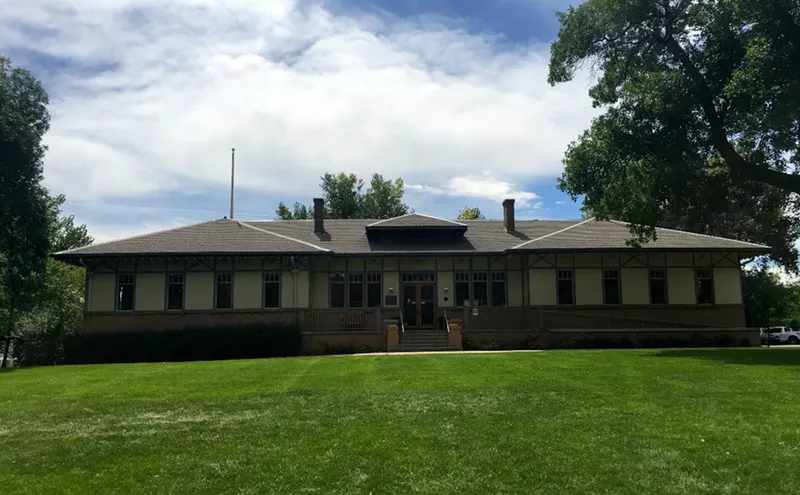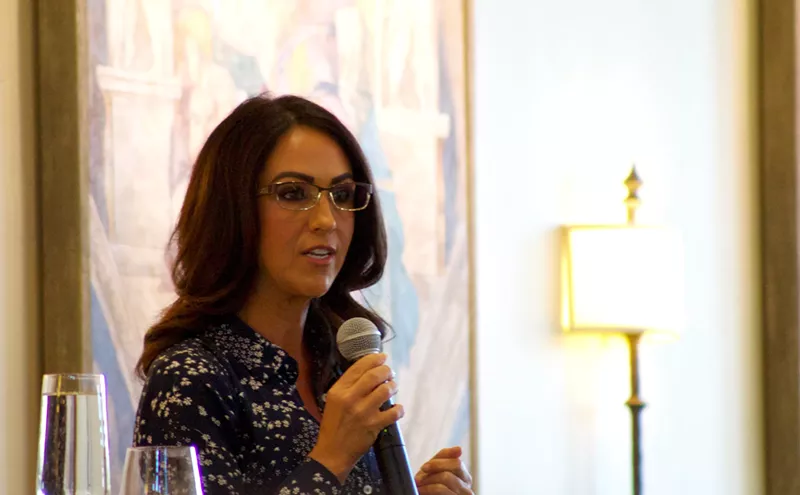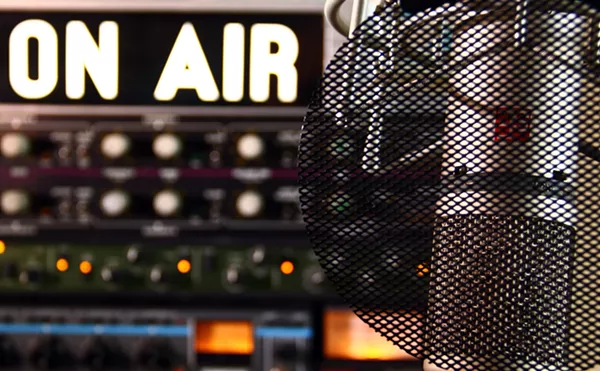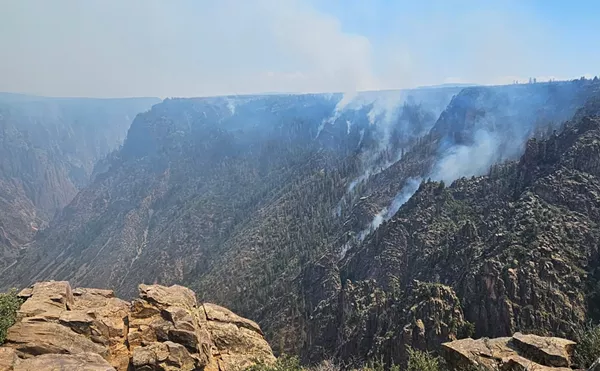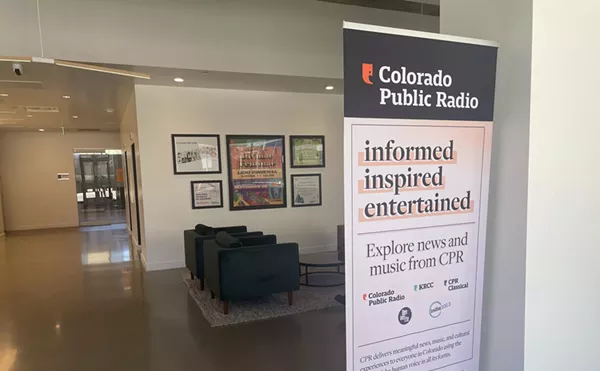Boulder is known as one of the most bike-friendly cities in the country.
Yesterday, however, the Boulder City Council voted to scrap protected bike lanes along a four-block stretch of Folsom (a process dubbed "right-sizing") in favor of returning to four lanes of traffic — the configuration that had previously been in place.
According to critics, it was definitely an example of good intentions gone awry by way of artificially created traffic jams that frayed the nerves of motorists and cyclists alike.
The Folsom Street Living Lab pilot program is part of Boulder's transportation master plan, which is illustrated in the following infographic.
Editor's Picks
The specifics of the Folsom project are described like so in the agenda from yesterday's meeting:
As part of the implementation of Boulder’s 2014 Transportation Master Plan (TMP), the Folsom Street Living Lab pilot project was installed in July 2015 to test and evaluate whether a new street configuration and design treatments would enhance multimodal access and travel safety. Throughout the planning, installation and ongoing evaluation of the pilot project, the City of Boulder has received extensive and valuable community feedback about how the pilot is affecting people’s ability to get around Boulder.The feedback has certainly been voluminous — and in recent weeks, changes were made to the stretch of Folsom, where a traffic lane had been eliminated in order to create the protected bike lane. Here's a City of Boulder video describing the attempted fixes.
The alterations didn't exactly placate the masses — and by the city's own estimates, traffic times through the stretch of Folsom in question increased substantially as a result of the lane switch.
We've included another infographic below about recent evaluations of the plan's effectiveness — but here's an excerpt, which focuses on afternoon vehicle travel times over the weeks after the installation of the protected lanes.
Note that the highest times for southbound commuters after the installation of the protected bike lanes are often nearly twice as long as the maximum "before" time of three minutes and 44 seconds.
E-mails to the city about the lanes included plenty of messages from residents who felt Boulder officials had erred by fixing something that wasn't broken — or at least not broken as badly as the alternative.
Continue for three examples from city documents, illustrated by images from the video above.
During this morning's rush hour I attempted to execute a right-hand turn onto Folsom southbound from Mapleton. Traffic was backed up a few cars north of Mapleton but the light at Pine had just turned green and no cyclists or more cars were coming down the hill from the north.
However, a bicylist was riding north on the sidewalk on the west side of the sidewalk. As I cannot see traffic to the north without pulling forward to block the crosswalk, I pulled out into the bike lane to let him pass behind me. Given that the line of traffic was starting to move southward, I was expecting to be able to pull behind the last southbound vehicle on Folsom within a few seconds.
But then traffic on Folsom suddenly came to dead halt due to congestion farther south. Within the next 15 to 30 seconds later another turning car came up behind me on Mapleton, and then more cars came down Folsom from the north—followed by two bicyclists. I was stuck in bicyle lane and I felt terrible about it, but the traffic was so snarled that there was nothing I do about it.
The lead bicyclist slowed down to wait for me to clear but the trailing bicyclist sped by him, passed the line of stopped vehicles on the right and then swerved around the front of my car. He shook his fist and looked at me, shouting something at me about blocking the bike lane.
While I did misjudge how bad the traffic jam would become at that moment, I really appreciated the other bicyclist's look of sympathy. Regardless of whether you are driving or a car or riding a bicycle, you have to be willing to allow vehicles caught in an intersection an opportunity to clear it. Traffic jams suck for everyone.
But this problem with intersections also reveals what a bad idea it was for the city to create artifical traffic congestion by reducing the number of through lanes on Folsom. I have made that same right turn thousands of times under the former design of Folsom without ever experiencing that sort of difficulty. It isn't that the rightsized design is just not working, it is that Folsom is now wrong-sized and less safe for all of us.
Please count me as strongly opposed to the right-sizing of Folsom and any other of Boulder streets.
Hi all,
Once again good intentions have gone awry. I do not like the current configuration of Folsom. Perhaps additional tweaks will help. Losing the car lane is a major mistake. You need to give us that lane back and just tweak the features of the bike lane. First, your before data are pathetic. The idea that one day of data is pretty much representative of the year as a whole is the dumbest assumption ever. Is one day with and without students here the same? Don’t take us for fools. Is a winter day that is dry or snowy and cold the same as a summer day that is dry or rainy and warm? Such arrogance balancing on the platform of ignorance is a poor representation of reality.
If safety is the purpose, add some data on how many bikers wear helmets. Very few, less than half, that’s a fact you are missing. Safety shmafety.
Here are some tweaks that you could try…AFTER YOU GIVE US THAT LOST LANE BACK. Put the big green blobs at each right turn lane for bikes so bikes and cars know they have to share the lane, and narrow the bike lane line and paint it red or yellow at all these right turn lanes, so the bikers know they are in a danger zone too.
Put the plastic bollards closer together at the far side of an intersection, then VERY far apart after that. Since bikers will want to pass each other they need to go outside the line and bollards occasionally.
In case you missed it, the left turn for bikers is still as risky as it has ever been.
1.Give us the car lane back.
2.Enforce the laws bikers break constantly.
3.Note that so many bikers do not wear helmets that your desire for safety should start there and should certainly not ignore that fact.
I am a 79 year old senior living in Winding Trail Village. I depend greatly on Folsom, Iris, and the 28/30 couplet to get anywhere. While I still ride a bike occasionally, it is ridiculous for some politically correct group to suggest it’s a good idea for me, other seniors, moms with kids, handicapped folks, and others to ride their bikes to do errands to reduce car traffic. After having tried Folsom several times, I now avoid it completely and add to the congestion on 28th and 30th, even to go to McGuckins or some other place on Folsom.This response led to the council pulling the plug on the Folsom lanes, which will soon be restored to their former four-lane design.
I will not vote for any candidate who supports expanding rightsizing and am very sorry to see that the only two members who opposed it are not running again.
Such retreats are rare. According to Streetsblog, 75 cities in the U.S. had built protected bike lanes as of last month, with only three eliminating them prior to Boulder; lanes were removed in areas of Memphis, Boise and Portland, Oregon.
Don't expect Boulder's bad experience to end efforts to increase the number of protected bike lanes in other communities across the country. But it's certainly a cautionary tale.
Look below to see the aforementioned infographic depicting evaluation of the Folsom Street project.
Living Lab Phase II Corridor Evaluation, Folsom Street: September 23, 2015




